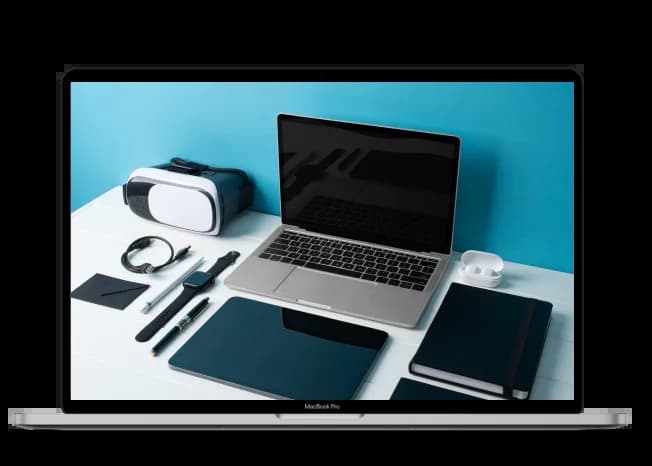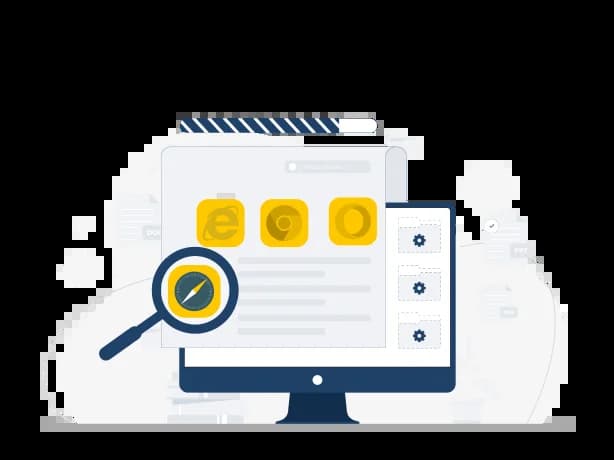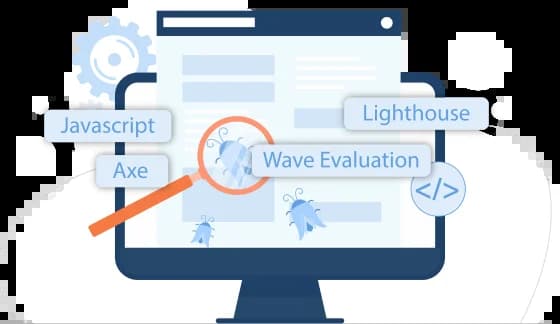Cross Platforms Testing

Several Browser And Screen Reader
NVDA (NonVisual Desktop Access) is a free and open-source screen reader for Windows. It works well with Mozilla Firefox, providing support for browsing the web, accessing web content, and interacting with web applications.
ChromeVox is a built-in screen reader for Google Chrome, available on Chrome OS, Windows, and macOS. It provides access to web content and applications within the Chrome browser, offering a range of navigation and interaction features.
VoiceOver is a built-in screen reader on Apple devices, including Mac computers, iPhones, and iPads. It works seamlessly with the Safari browser, allowing users to navigate and interact with web content on Apple platforms.
Narrator is a built-in screen reader in Microsoft Windows, including Windows 10 and Windows 11. It works well with the Microsoft Edge browser, providing accessibility features for browsing the web and accessing web content.
JAWS (Job Access With Speech) is a popular screen reader for Windows. It is compatible with multiple browsers, including Mozilla Firefox, Google Chrome, and Microsoft Edge. JAWS offers extensive features and customization options to enhance web accessibility.
On iOS devices (iPhone and iPad), the built-in VoiceOver screen reader works seamlessly with the Safari browser. It enables users to navigate web content, interact with elements, and access various web-based applications.
It plays a significant role in accessibility by providing an alternative means of input for individuals with disabilities or mobility impairments.

Tools Available For Automation Accessibility Testing
There are several tools available for automation accessibility testing to help identify and address accessibility issues in digital content. Here are some commonly used tools:
Axe is an open-source accessibility testing tool developed by Deque Systems. It offers browser extensions for Chrome and Firefox, as well as integrations with various development frameworks and testing environments. Axe provides automated accessibility tests and generates detailed reports with actionable information for issue remediation.
Accessibility Insights, developed by Microsoft, is a suite of tools designed to help developers and testers identify and fix accessibility issues. It includes browser extensions for Chrome and Microsoft Edge, along with a Windows application and a command-line interface. Accessibility Insights offers automated accessibility tests, detailed issue reports, and guidance for remediation.
The WAVE Evaluation Tool, developed by WebAIM, is a web accessibility testing tool available as a browser extension for Chrome and Firefox. It provides real-time feedback on the accessibility of web pages, highlighting potential issues and offering suggestions for improvement. WAVE also offers a comprehensive web-based tool for more in-depth accessibility testing.
Lighthouse is an open-source automated testing tool developed by Google. It is available as a Chrome browser extension and can also be run from the command line or integrated into build processes. Lighthouse includes an accessibility audit feature that evaluates web pages against accessibility best practices and provides recommendations for improvement.
It is an easy-to-use tool that helps developers identify accessibility issues and features of WCAG 2.0, WCAG 2.1, EN 301 549 and Section 508.

The toolkit is designed to more easily and interactively integrate automatic and manual accessibility. Look for accessibility features and issues with testers or developers during accessibility testing. ARC tools are tightly integrated with Chrome developer tools and by default use the same ARC rules that the ARC platform uses. This allows developers and QA testers to bring ARC tests into development environments and check for quality issues from ARC scans.